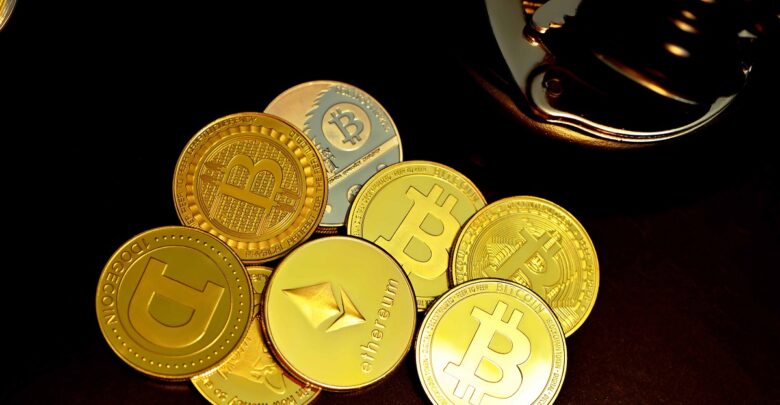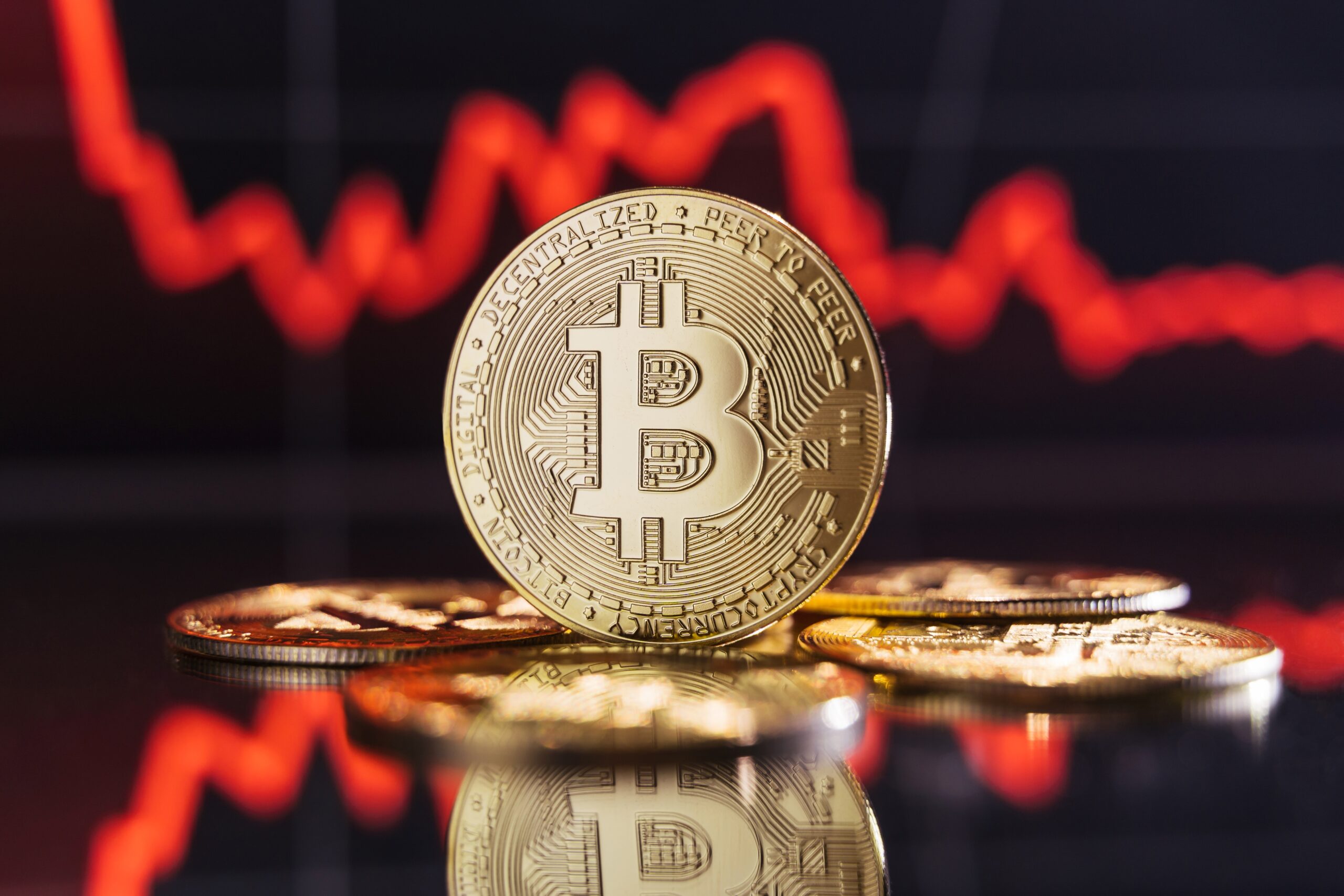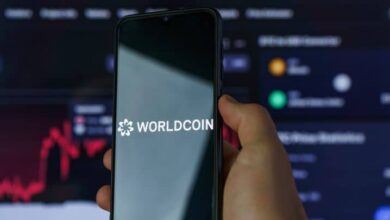Crypto Futures Trading Guide 2023 – Everything You Need To Know

A particular class of derivative trading instrument is futures. There is an agreement to buy or sell a base asset at a defined price on a specific date in these authorized trading contracts between 2 parties. The fundamental asset for Bitcoin futures would be this cryptocurrency.
With futures, traders may protect themselves from erratic market conditions and guarantee that they will be able to buy or sell a specific cryptocurrency at a given price in the future. However, if the price changes against a trader’s expectations, they can find themselves buying bitcoin for more than it is worth or forced to lose money on a sale.
In some cases, futures contracts enable traders to indirectly obtain exposure to bitcoins and potentially benefit from their price swings without either purchasing or selling cryptocurrencies like BTC directly, which requires establishing a cryptocurrency wallet and guiding through intricate exchanges.
In late 2017, the Chicago Board Options Exchange, currently known as the CBOE Options Exchange, introduced regulated BTC futures trading. The CBOE item has been retired, but CME’s futures have since taken a significant share of the market for trading cryptocurrencies. The total rolling 24-hour total worth of all futures markets on the major international and domestic exchanges was $26.9 billion as of February 16. Notional value is the result of multiplying the price of a bitcoin by the quantity of futures contracts that investors have purchased.
10,105 BTC futures contracts were traded on average per day in 2021, up 13 percent from the previous year, according to CME.
What Makes Trading In Cryptocurrency Futures So Unique?
How To Trade Cryptocurrency Futures?
A cryptocurrency futures contract is made up of three primary parts.
The term “expiration date” relates to the deadline for settling a futures contract. In other terms, at the pre-set price, one party must buy, while the other must sell. However, it should be noted that traders have the option to transfer their contracts to additional investors before the closing date.
Unit per contract: This identifies the value of the base asset per contract and differs from platform to platform. One CME BTC futures contract, for instance, is equivalent to 5 BTC. However, one Deribit bitcoin futures contract is worth 10 USD value of bitcoin.
Leverage: Exchanges permit users to borrow money to raise their trading size, which can help traders maximize the possible profits on their futures bets. Once more, leverage rates differ significantly between systems. While FTX dropped its leverage levels from 100x to 20x, Kraken lets users increase their transactions by up to 50x.
Additionally, there are two distinct methods that futures contracts might be settled.
Physically delivered: In other words, the buyer buys and receives bitcoin after settlement.
Cash-settled: This refers to settlements in which the purchaser and seller exchange cash, typically in USD.
Pricing For Cryptocurrency Futures
Despite the fact that a cryptocurrency futures contract is meant to closely mirror the cost of the underlying financial asset, its value might occasionally change as it approaches maturity. This is typically brought on by abrupt, dramatic fluctuations in volatility, which might be sparked by a basic event like Tesla purchasing more bitcoin or a big nation outlawing cryptocurrencies. Spreads may increase or decrease in one or more sets of futures contracts as compared to others due to supply and demand difficulties for certain contracts.
There are other pricing variations known as “gaps.” These relate to time intervals on price movements where there is no trade, hence there is no pricing information for those intervals. While the cryptocurrency market as a whole is open for business around the clock, these exchanges can only function during their designated trading hours on more traditional platforms such as CME.
Large gaps could be visible in the price chart of an instrument on a conventional platform the following day if the value of a cryptocurrency spikes dramatically during the conventional market’s closing hours.
Where Can I Buy And Sell Bitcoin And Cryptocurrency Futures?
There are currently a variety of conventional and cryptocurrency-native platforms on which you can start trading cryptocurrency futures as a result of the rapid growth in popularity of cryptocurrency-based futures instruments over the past five years.
The following are some of the top platforms that offer this type of trading:
What Distinguishes Perpetual Swap Contracts From Futures Contracts?
If you’ve spent any time at all in the cryptocurrency sector, you may have heard the phrase “perpetual swap contract.”
Similar to futures contracts, investors can use perpetual swaps (or “perps”) to buy or sell an asset at some point in the future; but, unlike futures contracts, permanent swap contracts do not expire.
Accordingly, a trader may leave a buy or sell contract open for as long as they like, as long as they continue to make their margin payments, or until they are ready to settle it or transfer it to another user.
Since these kinds of trade contracts don’t have an expiration date, a unique technique is needed to guarantee that the contract price closely reflects the market price. According to whether the contract’s price is below or above the market price, long (buying) or short (selling) traders in this system—known as a “perpetual swap financing rate”—pay the other side a regular fee.
Long traders will be penalized by having to pay a commission to short traders if the market price falls below the perp futures price. Likewise, short sellers will compensate long sellers with a fee if the marketplace price is greater than the perpetual futures price.
Perp funding rates are frequently a helpful indicator of how the market feels about a specific asset.
Trading Crypto Futures Carries Risks
Regardless of the fact that trading futures have many advantages over spot trading, such as repeated exposures and the ability to trade with leverage to increase possible profits, there are also a number of significant risks involved that new investors should be aware of. Margin calls and liquidations predominate.
As was already mentioned, using leverage allows you to boost the size of your trades by borrowing money from a 3rd party, typically the exchange you’re trading on.
Obviously, an exchange won’t permit you to borrow money if you don’t provide insurance in the event that the trade happens against you. The “initial margin” that a trader must set aside before initiating a leveraged trade is referred to as this insurance fund. Leverage amplifies both your potential gains as well as your potential losses.
But first, it’s crucial to comprehend the following three components of a futures contract:
Margin account: Here is where the original margin is held.
Margin calls: A margin call occurs when a user receives a notification from an exchange that the funds in their margin account are running low.
If a customer’s original margin runs out, they must have to maintain the margin available to put into their margin account. Consider it reserve money.
The term “liquidation” refers to when an investor’s position is automatically terminated by the market and their original margin is taken when the market moves against them and their particular margin account is exhausted.
The general calculation is Liquidation% = 100/leverage, which tells you how much the market must move on you before you are liquidated. To sell your position, the market just needs to go against you by two percent (100/50 = 2), for instance, if your leverage is 1:50. That implies you run a very high risk of getting liquidated and losing your money invested in the extremely volatile world of cryptocurrencies.
Of course, traders can always increase their original margins to maintain their holdings for a longer period of time in the hopes that the market will turn around, but doing so again increases financial risk.
Underlying Asset
The underlying financial assets that serve as the foundation for a derivative’s price are referred to as underlying financial instruments. As a result, the value of the underlying determines the cost of the derivative. The price of that associated derivative will adjust to reflect any fluctuations in the value of the underlying.
The term “current market price,” or “CMP,” is frequently used to refer to the cost of an underlying item. The terms “spot price” and “CMP” are frequently used interchangeably by market players. In essence, both names refer to the same thing.
A crucial factor in determining a derivative’s price is the underlying cost, current market price, or current value. The closing market price, or CMP, is the price at which the underlying security was last traded. It frequently corresponds to the underlying asset’s genuine value or market price.
Typical Underlying Asset
Let’s use an example to better grasp what an underlying financial instrument in the stock market entails. Reliance Industries Ltd. is a corporation whose stocks and futures (the derivative’s underlying asset) are both registered and exchanged on the exchange.
RIL shares have now been derived into RIL futures. In other terms, the underlying assets are RIL shares. The gap between the prices of the underlying stock and the futures is referred to as “basis” if RIL shares are now trading at $2,600 and RIL futures were trading at $2,605.
The basis is equal to the difference between the underlying security’s spot price and its futures market.
The basis, also known as the spread, between the price of the underlying security and the associated derivative might be positive, zero, or negative. The spread between spot pricing and futures prices is typically positive. This disparity typically gets less as the contract gets near to expiration. The future cost will eventually equal the market worth of the underlying asset, but only at expiration.
Various Underlying Asset Types
The assets under consideration and the potential dangers they pose are detailed below.
Stocks: Another word for shares is stocks. Since a stock’s price is influenced by both basic considerations and market forces such as demand and supply it is subject to the risk, balance sheet risk, and overall economic risk concerns.
Indices: When we talk about indices, we mean things like the India VIX, Nifty50, Bank Nifty, and Nifty Midcap50. Both market risk and overall economic risk apply to these. Their costs are also influenced by the market supply and demand forces.
Currency: The term “currency” refers to the official money that is accepted around the world, such as the dollar, euro, and others. These are vulnerable to sovereign debt, political, and interest rate risk. Examples include USD/EUR, GBP/USD, GPB/EUR, etc.
Bonds: A financial asset used to lend money, bonds are a sort of debt. They are exposed to creditors, interest rates, and default risks.
Products that fall into the category of “commodities” include both perishables, such as fresh fruit, and non-perishables, such as nuts and seeds, as well as precious metals, such as gold, silver, etc. Since the economic forces of supply and demand determine the cost of commodities, they are also vulnerable to market danger and broader economic risk.
The Best Way to Trade Futures Contracts
Instead of buying or selling the real-cash commodity, which is performed with a stock, futures are typically used to hedge commodities’ price risks or to take benefit of price changes. Four basic types of assets are offered for futures contracts: equities, indices, forex, and commodities.
Hedgers and speculators are the two main players in futures trading. Futures are used by hedgers to protect themselves from irrational or quick future price changes in the underlying monetary commodity. Hedgers are typically organizations or people who occasionally trade in the underlying commodity of cash.
Consider a significant food machine that cans corn. if corn costs increase. He has to give the corn trader or farmer additional money. The manufacturer can “hedge” his exposure to risk against rising corn prices by purchasing sufficient corn futures contracts to equal the anticipated amount of maize he will purchase. Due to the correlation between cash and futures prices, a positive outcome for the futures position can be expected if corn prices climb by an amount greater than the cash corn losses.
The 2nd biggest category of futures players is speculators. Traders and independent floor traders are among these participants. “Locals,” or independent floor traders, trade for their individual accounts. Trades are handled by floor brokers for their own customers or brokerages.
What Sets Futures Trading Apart From Other Forms Of Financial Trading
First off, futures have no intrinsic worth by themselves because their value is based on that of another derivative. Unlike other financial assets, the contract has an expiry date and is only valid for a specific amount of time.
While future contracts have a defined time period, stocks represent capital in a firm and can be kept for a long time. This is why the direction and timing of the market are crucial when thinking about futures trading. The extent to which leverage in futures trading compared to other financial assets may be the most significant distinction.
Leverage While Trading Futures
Therefore, we are aware that a futures contract is an investment in a derivative. When the such contract is started, the investor simply needs to make a small initial investment rather than the full contract price. The contract must be initiated with an initial margin equal to the total value. The exchanges determine the maintenance value and margin. This is among the key characteristics that set the futures market apart from other types of financial assets.
How To Get Started With Online Commodity Trading
A commodity is a tangible good whose price is primarily influenced by supply and demand. This comprises foodstuffs, fuel, and metals, with gold being the most well-known.
Traders and speculators make predictions about whether prices will grow or fall by a specific time in a controlled market where commodities are traded. Trading commodities online is more effective when done with some prior extensive research and planning to save the inconvenience of the old technique of phoning a commodities brokerage and waiting for a fulfilled order price.
The first step is picking a commodity broker. A number of brokers offer trading with high-quality goods and services and reasonable fee costs.
The next step is to complete the documentation for the trading account online. The broker assesses the client’s suitability for trading commodities. The customer’s income, net worth, and credit are all taken into account.
Funding the account: The quantity of money for the account is up to the individual. Before investing real money, many commodities brokers offer simulators for practice.
Futures trading is a challenging field due to a large number of derivatives involved and high leverage, which makes it possible to lose a significant amount of money in one transaction. Consequently, it is crucial to comprehend how these fundamental sections operate.
Conclusion
In futures trading, a seller and buyer enter into a contract with a set expiration date that is established for the future. Participants include hedgers and speculators. Speculators are typically floor traders, whereas hedgers safeguard their investments from hazards. Futures trading is compared to the worth of other underlying financial instruments because they have no inherent worth. Leverage is one essential element.
Only a tiny margin value is paid by the buyer when the contract is first initiated. Commodities can be traded online with the right planning. Finding a reliable broker is crucial.
Tokenhell produces content exposure for over 5,000 crypto companies and you can be one of them too! Contact at info@tokenhell.com if you have any questions. Cryptocurrencies are highly volatile, conduct your own research before making any investment decisions. Some of the posts on this website are guest posts or paid posts that are not written by Tokenhell authors (namely Crypto Cable , Sponsored Articles and Press Release content) and the views expressed in these types of posts do not reflect the views of this website. Tokenhell is not responsible for the content, accuracy, quality, advertising, products or any other content or banners (ad space) posted on the site. Read full terms and conditions / disclaimer.







